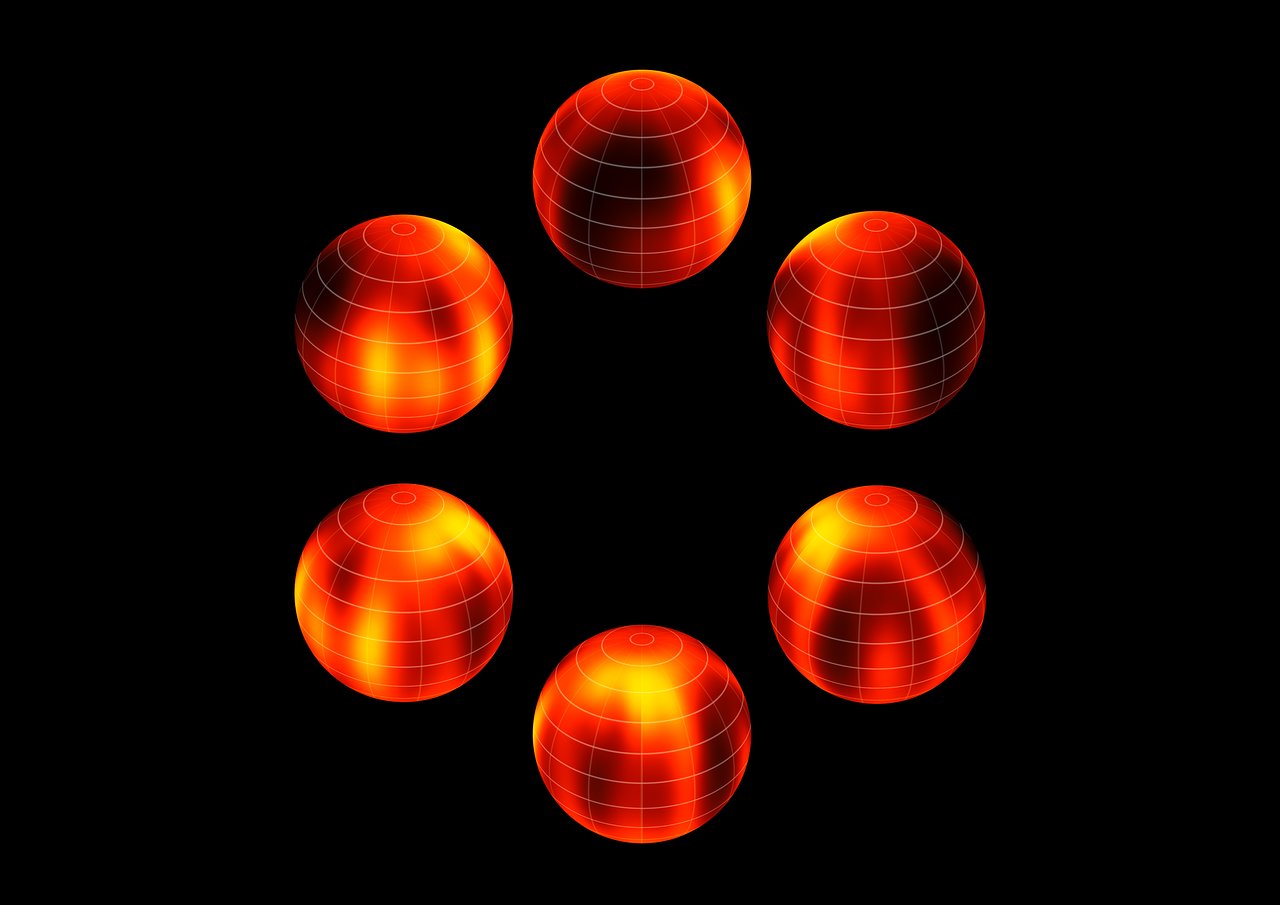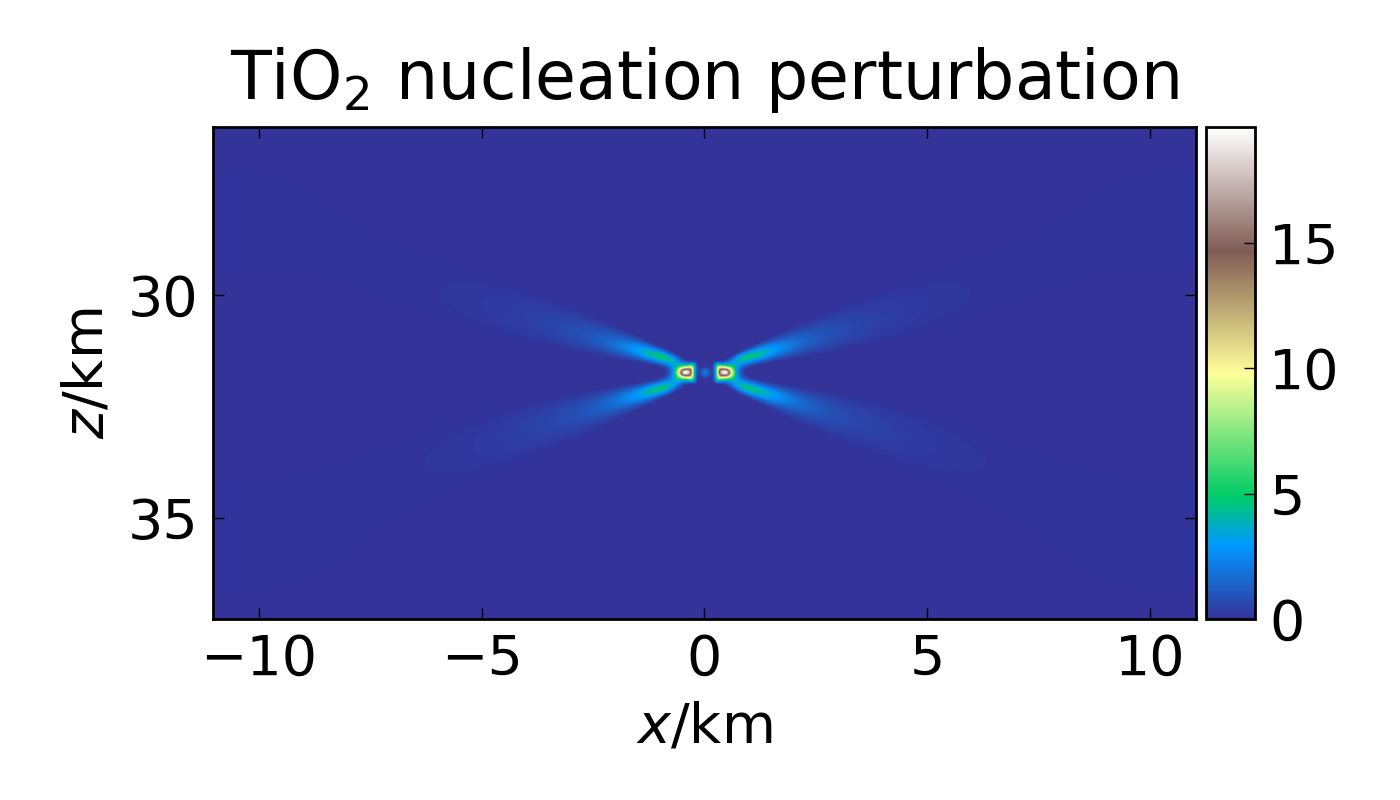I used to study theoretical astrophysics and modelling, which means I spent most of my day either scribbling maths in a notebook, debugging code, or chasing down data files. My research was focused on the impacts the evolution of dust clouds in the atmosphere of brown dwarfs.
Brown Dwarfs

Surface map of a brown dwarf (Luhman 16B), showing patchy clouds over one revolution.
License CC-BY, ESO/Crossfield.
Brown dwarfs are weird, fascinating objects: not quite stars (their mass is too low to sustain nuclear fusion), not quite gas giants either (their mass and formation process are different). Young, warm brown dwarfs show signs of patchy clouds on their surface, made in part of metallic dust. I build computer models that try to explain how winds, magnetic fields and weather systems shape how these clouds are formed and evolve.
Internal Gravity Waves
Gravity waves are something we’ve all seen: when you drop something in water, that’s what the ripples are. Internal Gravity Waves happen inside a fluid instead of on its surface, but follow the same principle: a bit of fluid is moved up or down, and buoyancy makes it oscillate around its original position.

Effect of internal gravity waves on the rate of dust grain formation in a brown dwarf model. The passage of a gravity wave increases that rate by up to 10 times in certain areas away from the source (centre).
Internal gravity waves occur in Earth’s atmosphere, and current models show they occur in brown dwarfs too. I wrote a computer model that simulates these waves in a brown dwarf atmosphere, and the impact they have on the formation of dust clouds.